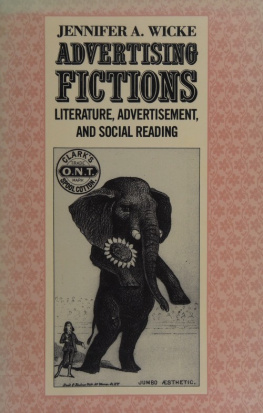THE EARLY MODERN EXCHANGE
Series Editors
Gary Ferguson, University of Virginia; Meredith K. Ray, University of Delaware
Series Editorial Board
Frederick A. de Armas, University of Chicago; Valeria Finucci, Duke University; Barbara Fuchs, UCLA; Nicholas Hammond, University of Cambridge; Kathleen P. Long, Cornell University; Elissa B. Weaver, Emerita, University of Chicago
The Early Modern Exchange publishes studies of European literature and culture (c. 14501700) exploring connections across intellectual, geographical, social, and cultural boundaries: transnational, transregional engagements; networks and processes for the development and dissemination of knowledges and practices; gendered and sexual roles and hierarchies and the effects of their transgression; relations between different ethnic or religious groups; travel and migration; textual circulation/s. The series welcomes critical approaches to multiple disciplines (e.g., literature and law, philosophy, science, medicine, music, etc.) and objects (e.g., print and material culture, the visual arts, architecture), the reexamination of historiographical categories (such as medieval, early modern, modern), and the investigation of resonances across broad temporal spans.
Titles in the Series
Involuntary Confessions of the Flesh in Early Modern France, Nora Martin Peterson
The Enemy in Italian Renaissance Epic: Images of Hostility from Dante to Tasso, Andrea Moudarres
Advertising the Self in Renaissance France: Lemaire, Marot, and Rabelais, Scott Francis

University of Delaware Press
2019 by Scott Francis
All rights reserved
Printed in the United States of America on acid-free paper
ISBN: 9781644530085
First published 2019
1 3 5 7 9 8 6 4 2
Library of Congress Cataloging-in-Publication Data is available for this title.
Cover art: tienne Dolets printers mark, title page of Claude Baduel, Cl. Baduelli oratio funebris in Floretae Sarrasiae habita, Lyon: tienne Dolet, 1542. (FC5 B1449 5420, f. A1r, Kislak Center for Special Collections, Rare Books, and Manuscripts, University of Pennsylvania)
mes treschers frres et surs, tous enfants dApollon, et tous bons pantagrulistes
Acknowledgments
The point of departure for this book was my doctoral dissertation, Authorial Personae, Ideal Readers, and Advertising for the Book in Lemaire, Marot, and Rabelais, which I defended at Princeton in May 2012. My thanks to Franois Rigolot, Sarah Kay, Franois Cornilliat, and Kevin and Marina Brownlee for their invaluable advice in researching and writing the dissertation, and in reworking it into a book. My thanks as well to my colleagues in the French section of the Department of Romance Languages for playing Mercury to my Amant Vert (or if you prefer, Pantagruel to my Panurge) during my first years at Penn.
I could not have undertaken this project without the generous assistance of the Georges Lurcy Charitable and Educational Trust, whose fellowship afforded me the opportunity to do primary research in Europe in 200910. I would like to thank the staff of the Bibliothque nationale de France, the cole Normale Suprieure, the Bibliothque Municipale dOrlans, the British Library, the Folger Shakespeare Library, Princeton University Library, Rutgers University Library, the Rosenbach Museum and Library, and the University of Pennsylvanias Kislak Center for Special Collections, Rare Books, and Manuscripts for their assistance and, where relevant, for the permission to use images from their collections.
Chapter 6 appeared in an earlier form as La publicit iatrosophiste de Rabelais: Captatio benevolentiae et persona de lauteur in LAnne Rabelaisienne 1 (Paris: Classiques Garnier, 2017): 183202. I am grateful to Classiques Garnier for their permission to reuse this material. I am equally grateful to the University of California Press and to Jim Frame for the permission to use Donald M. Frames The Complete Works of Franois Rabelais in Chapters 56.
Last, but not least, Id like to thank all my seizimiste friends and colleagues for the intellectual stimulation, kind words, and convivial company with which theyve provided me since I entered the field. And of course, Id like to thank my parents, Keith and Patricia Francis, without whom none of this would have been possible.
Abbreviations
| BHR | Bibliothque dhumanisme et Renaissance |
| BNF | Bibliothque nationale de France |
| CL | Cinquiesme Livre |
| ENS | cole Normale Suprieure, Paris |
| ER | tudes Rabelaisiennes |
| G | Gargantua |
| LCL | Loeb Classical Library |
| NRB | Stephen Rawles and Michael Screech, A New Rabelais Bibliography, ER 20 (Geneva: Droz, 1987) |
| OC | Clment Marot, uvres compltes, ed. Franois Rigolot, vols. 12 (Paris Garnier, 20079) |
| OPC | Clment Marot, uvres potiques compltes, ed. Grard Defaux, vols. 12 (ParisBordas, 199093) |
| P | Pantagruel |
| QL | Quart Livre |
| Recueil-Epistre | Jean Lemaire de Belges, Epistre du Roy a Hector de Troye, et aucunes aultres oeuvres assez dignes de veoir |
| TL | Tiers Livre |
Authors Note
In citing sixteenth-century editions of Lemaire, Marot, and Rabelais, I have respected the original orthography and accentuation, with two exceptions. In keeping with modern usage, I have resolved abbreviations (et for &, devant for devt, etc.) and distinguished between i and j and u and v. For the sake of clarity, I have also added modernized punctuation and capitalization where appropriate. Unless otherwise noted, all translations are my own.
Introduction
T HE PROLOGUE TO the 1546 Tiers Livre details Franois Rabelaiss concern that his book, a peculiar blend of philosophical inquiry and often-crude comedy, will not be to his readers liking. The French Lucian, so called by his adversaries for his supposed irreligion, relates his anxiety with an anecdote from his Samosatan namesake, To One Who Said, Youre a Prometheus in Words, in which Lucian wonders whether the compliment for his originality is backhanded.
Rabelais evokes the broad possibilities and daunting risks for those who distribute their books in print. The printing press, capable of producing books faster and in greater number than copyists working by hand, brought with it the hope of reaching and winning over more readers than previously possible. It also brought the fear that these readers, whose proclivities, priorities, and manners of reading and interpreting the author could not ascertain as readily as those of a specific dedicatee or courtly milieu, would react less favorably than the author would hope. Having ones works printed was potentially a very profitable venture, less in terms of direct remuneration from saleswriters typically saw little, if anything, of this revenuethan in terms of prestige and the ability to attract patrons, but it also meant exposing oneself to piracy, unauthorized appropriation, and misinterpretation. If the Renaissance and the transition from manuscript to print culture marked the birth of the modern author whose death Roland Barthes notoriously proclaimed, this birth was accompanied by a sense of losing control over ones work. It is akin to playing at games of chance, as Rabelais suggests in his allusion to knucklebones: Venus is the highest possible score for any given throw, whereas Whiskers the dog is the lowest. To use analogous terms from craps, by publishing the















